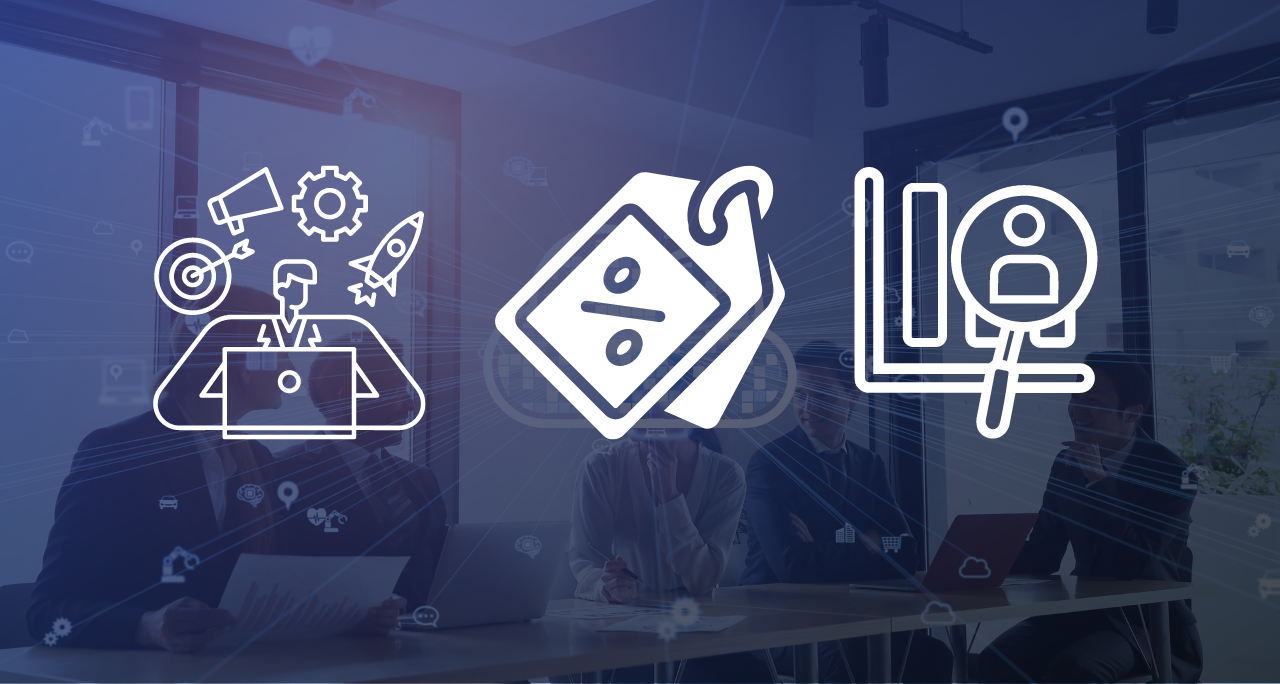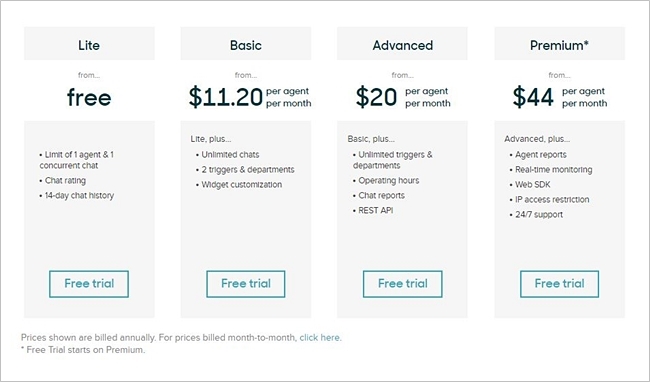Updated: June 2023
There are no totally unique SaaS tools. Every provider has a wide range of competitors—cheaper, faster, more established, more specific, more feature-rich, more localized. Competition is at an all-time high and customer acquisition has never been harder.
Enter the freemium SaaS pricing model. This is a proven method of maximizing the number of users brought “through the door” and using your product. The only downside is you’re letting them in for free.
In order to turn a profit, you need to convert those free users into paying subscribers. In other words, move them from freemium to premium. Let’s take a look at how exactly freemium pricing works, why it’s so effective and how you can implement freemium to increase revenue for your SaaS business.
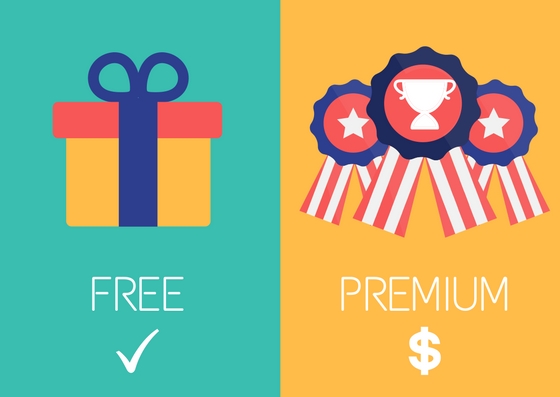
What is freemium?
A freemium SaaS model offers a limited set of features, for free, indefinitely. This is a popular way to engage new customers and demonstrate the value of your product. Your premium subscription includes more features and functionality that must be paid for.
While giving away the product free of charge might not seem like a sound business practice, with the right freemium strategy it can be extremely effective.
Wait—how is this different from a free trial?
They are both solid customer acquisition strategies: they each permit limited use of your product without cost. The main differences are scope and duration:
- Scope—Free trials come with unlimited access to the product. There are no paywalls, no grayed-out features. Freemium accounts are almost the opposite. They provide a basic, feature-limited version of the product, allowing users to pay to upgrade. But…
- Duration—Freemium accounts also last forever. If your needs are met, you will never need to upgrade or pay. Free trials are time-limited. Anywhere from 7 to 30 days is common. At the end of that time, you must either cough up or close up
There are several obvious benefits to Freemium accounts for both users and the product owner:
- Offering free sign-ups attracts a wider user base while reducing advertising spend and the need for a large sales team.
- Subscription candidates respond to freemium SaaS models more readily than they would to 30-day free trials, since they often dislike (cumbersome) cancellation processes or – at least in the beginning – they don’t feel they need all the bells & whistles.
- Offering additional incentives to users who like or recommend a business on social channels can result in that company reaching additional prospects with little marketing effort.
But to provide a balanced viewpoint, there are risks too:
- If your freemium offer is too feature-rich, users might never be compelled to upgrade. This is okay for a certain percentage of users, but could be catastrophic on a large scale.
- Your business still has to offer quality support to freemium users. Without converting enough paid customers, this resource can quickly burn through cash reserves and leave the business in a precarious position.
Bonus: Want to make a successful transition to Subscriptions or SaaS? Check out this Free Whitepaper.
How to manage feature limits with a Freemium SaaS model
If you’re considering a Freemium SaaS model, then you already have a product with a host of useful features. The key to nailing freemium is limiting the free product to a minimum of core, functional basics.
For instance, MailChimp, an email marketing and automation tool, includes only a few basic features in their free plan, building them up as the monthly price grows. They are a fantastic freemium example.
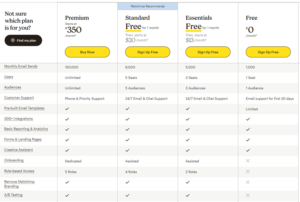
Play with usage to increase customer desire
While the purpose of a freemium model is to attract new users, the whole model backfires if most customers are genuinely happy with the free package. One option is to implement usage limits that are removed for paid subscriptions—whether that’s seats, actions, outcomes or another limit.
For example, if it works for your product, you can simply limit monthly usage. The New York Times, in an effort to replace the revenue lost from paper subscriptions, offers free reading up to ten articles a month. The Harvard Business Review follows an even more stringent policy—two free articles a month, period!

Of course, transparency is paramount: you must be clear about the difference between freemium and premium at the outset. Make sure customers know what they will and won’t be getting. Just try to avoid muddying your marketing with elaborate descriptions of each level—users won’t upgrade unless the value of doing so is extremely clear.
Of course, be clear about the difference between freemium and premium at the outset. Make sure customers know from the start what they’ll be getting and what they won’t, but don’t muddy your marketing with elaborate descriptions of each level. Confused users won’t upgrade unless they understand the benefits of doing so.
Collect feedback from free users to optimize customer experience
User feedback is one of the most powerful resources at your disposal as a SaaS business. It can tell you exactly how customers are using the product, their expectations, what’s broken, which features provide the most value—the list goes on.
It’s therefore crucial to be proactive about collecting feedback. You should send out surveys themed around specific topics like:
- Product experience
- Bugs and problems
- Reasons why you haven’t upgraded to a paid plan
Don’t be intimidated by these questions. Make it clear that your goal is to deliver an even better product and genuinely improve users’ lives. You aren’t trying to sell them anything. Once you have useful data, look for common responses, rank them by priority and start implementing changes. Positive outcomes might include:
- Identify most valuable free features
- Identify most sought-after paid features (if any)
- Higher quality UX and navigation
- Greater conversions from freemium to paid (freemium conversion rate)
Prompt upsell messages contextually to convert free users into paying customers
Despite what you may have heard, great products do not sell themselves. No one wants to give away their money. It is your responsibility as a business owner to ask for the sale.
One effective method is to identify the moments of greatest friction within the freemium experience. For example, the limits of a specific valuable feature. When a user is experiencing this friction, share a message with your best offer for the paid plan.
The message should explain clearly how the paid service eliminates their problem and how easy it is to get going. You may want to offer a time-limited discount code or another incentive that creates urgency.
Here’s a great example from Vimeo:
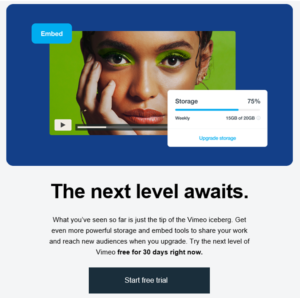
Without regularly asking for upgrades and showing the benefits, your freemium conversion rate will never grow.
Make upgrading easy and attractive
Now it’s time for some freemium model statistics. Assuming that 1% of customers upgrade to a paid subscription, each paying customer will be supporting 99 free users. Clearly conversion from freemium to premium is extremely important.
One way to increase conversions is to make upgrading easy. Literally as easy as possible. Audit your upgrading process and see what you can optimize: steps, messaging, design, calls to action, payment methods, checkout design and more. Be extremely thorough.
If you thought aesthetics doesn’t matter much, here’s an example from 123FormBuilder, a SaaS provider of web forms and surveys, who managed to increase revenue by 18% by improving the design of their Upgrade pricing page.
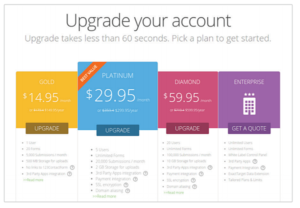
Occasionally offer discounts for upgrading to premium
Remember that once a customer is using your paid service, they’re likely to keep on using it. So consider offering a discount on your paid plans to get customers through the door.
If you add a deadline on the offer and create a sense of urgency, those customers may rush to take advantage of the reduced price. The discount will usually last a limited amount of time (e.g. “upgrade now for 50% off for 3 months!”) before defaulting to your typical pricing. Your priority during this discounted period is to provide so much value that customers will be happy paying full price down the line.
Discounts for annual plans are also common. For instance, HotJar offers a discount on all their paid plans. This is a great way to win new customers and also generate buzz about their product.
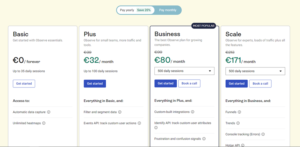
Is freemium pricing the right solution for your SaaS business?
The goal with every pricing and customer acquisition strategy is simple: grow your customer base and revenue. Freemium is a model that’s been proven time and again by SaaS businesses, and is certainly worth trying.
It’s crucial to recognize that the freemium model is never static. You must constantly analyze how many users are converting, take onboard product and onboarding feedback, adjust price levels and gradually optimize the entire strategy. This requires active effort and, realistically, that effort never stops.
A well-managed Freemium service can attract new users like bees to honey, while your strategic conversion plan slowly converts them onto the (highly-valuable!) paid plan. There is unfortunately no one strategy that works for every business. You need to take a good look at your product and your customers, then be brave enough to take the first step.
Good luck!

